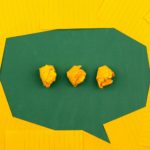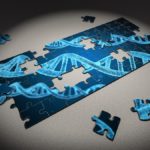I see curriculum as the night sky, or more specifically, looking at the night sky. Both the “what” and “how” of curricular restrictions are influenced by context. The view of the night sky and the “what” of the exploration is dependent on geographical context. Much as regional curriculum attempts to box-in educators with a set of selected concepts, so too those in the northern hemisphere are limited to exploration of their portion of the sky (and even still it might seem overwhelming in its scope).
Context of the “what” moves beyond the section of the sky under view to include the lens through which it is interpreted. Curricula changes attempt to address the needs of society, with the focus of the “what” shifting to best prepare students with the knowledge of the future. Just as through history, the same section of night sky has been viewed through shifting interpretations and perspectives from astrology and mythology to astronomy and cosmology.
Context also influences the “how” of curricula. The use of astrolabes, telescopes, star charts, and now simulations and phone apps to make sense of the exploration of the night sky, is the move from instructivism and traditionalism to constructivism and connectivism – as teachers scaffold, support and encourage personalizing the “how” of learning from within the “what” of the curricula. And arguably the goal of all curricula is to provide students with transferable and relevant skills that support new learning. Just as understanding your section of the night sky, from any lens, helps you to make sense of a new section of night sky that may one day be revealed to you.
There is no doubt that my understanding of the term “curriculum” has changed as much as any facet of my teaching during my career. In my beginnings teaching 9-12 science and math in Winnipeg, the term “curriculum” was something to be both feared and revered. In its simplest meaning, it was the tome of required knowledge that new educators sought to understand and implement to its last detail – the entire night’s sky. Inquiring how “much” of the curriculum one had taught was a common tactic of psychological warfare used to assert dominance or establish pecking order. Fabrications of “I teach it all” was, and perhaps still is, common, as failure to ram through all the material was to admit you were not up to the task as an educator. With experience and access to strong mentorship, I came to see the façade of curricular design authority and have since treated that same curriculum as incomplete and interpretive – a night’s sky of ideas to be mashed-up or flatly ignored as needed to suit the students in any given year.
I particularly enjoyed this succinct point by Blades (2016):
“Teachers’ views and approaches to teaching matter in curriculum change. Any attempt to circumvent teachers in the change process will invariably find that teachers modify, adapt, sometimes completely deviate from what the curriculum designers expected. ” (p. 26)
Reading of Kieran Egan’s (1978) What is Curriculum, along with David Blades’ (2016) Recovering Beauty Through STEM Science Education: A Letter to a Junior Colleague, has only crystallized my position that the question of “how” be best left out of curriculum and to the discretion of individual educators. Even without discussing Blades’ (1997) view of the power struggle within the discourse of curricular design, it is apparent that no static document should dictate how knowledge should be uncovered, or attempt to anticipate the personal learning needs of individual students. The section of the sky under study may be dictated through power-struggle, discourse of societal consideration or future economic position, but it is the educator, as autonomous professional, that is best suited to select the appropriate tools and strategies to investigate the stars. To further my metaphor: you may tell me “what” students should look at, but not “how” to help them see.
Image: By Greg Rakozy – free to use from UnSplash
References
Blades, D. (1997) Procedures of Power in a Curriculum Discourse: Conversations from Home. JCT, 11(4), 125-155.
Blades, D. W. (2016). Recovering Beauty Through STEM Science Education: A Letter to a Junior Colleague. Journal for Activist Science and Technology Education, 7(1). Retrieved from https://jps.library.utoronto.ca/index.php/jaste/article/view/26822
Egan, K. (1978). What Is Curriculum? Curriculum Inquiry, 8(1), 65–72. https://doi.org/10.2307/1179791






